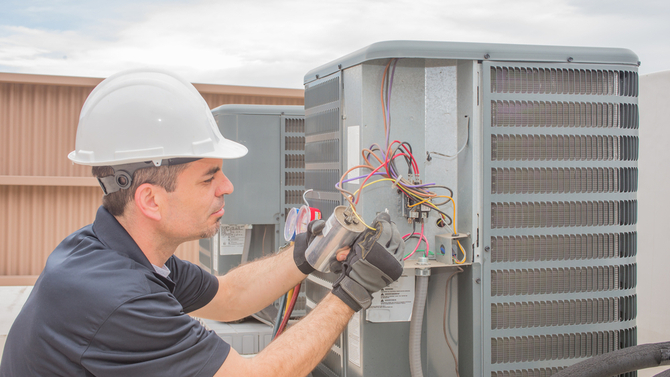14 HVAC Terms You Need to Know
HVAC
Let’s start with the most basic term of the bunch – HVAC, or heating, ventilation, and air conditioning. These systems are used to improve indoor air quality and cool down a variety of spaces from residential homes to commercial warehouses and server rooms.
Portable HVAC Unit
A portable HVAC unit is easier to install than a central AC system. It is also, as its name suggests, portable and can be moved around to different areas as needed.
Air-cooled Spot Coolers
Air-cooled spot coolers rely on a refrigeration system to remove hot air from a space and replace it with cold air. These systems require less installation because they are self-operating. They are the most common choice for server rooms and other areas with sensitive equipment where the use of water is not recommended.
Water-cooled Spot Cooler
Water-cooled units rely on water to cool hot air before recirculating it through the space. While this makes them more energy efficient, it means that they require some type of cooling tower and a drain along with a water hookup.
HSPF (Heating Seasonal Performance Factor)
The HSPF is the measurement for the efficiency of an air source. The higher the rating, the more energy efficiency the machine has to offer.
SEER (Seasonal Energy Efficiency Ratio)
This is another measurement that takes into account how much energy efficiency a particular air conditioner offers. The calculation used to identify energy efficiency is cooling output divided by the total electrical energy input. The higher the rating, the more energy efficient the unit is.
British Thermal Unit (BTU)
This is the amount of heat required to melt one ton of ice in a 24-hour time period. More specifically, it is the amount of heat required to lower the temperature on one pound of water by one-degree Fahrenheit.
Ton
The cooling capacity of an air conditioning unit is measured in tons. One ton equals the amount of heat that would be required to melt one ton of ice over the course of 24 hours. It might seem odd, but the measurement originates from the good old days when ice was used as an important component of cooling systems. For reference, a one-ton air conditioner is capable of producing 12,000 BTU per hour.
Hybrid Heat
A hybrid heat system reacts to temperature changes and sets off automatic systems that adjust settings to the most energy efficient mode. This can be used as a fuel-saving alternative to traditional systems used for heating and cooling.
Cubic Feet Per Minute (CFM)
CFM is a measurement that indicates the velocity of air flowing in or out of a room. It’s important to know how much CFM a room requires – you do so by multiplying the room’s volume by how frequently hot air gets changed each hour. This number is then divided by 60 to reach the total CFM required.
Alternating Current (AC)
A current that causes the polarity to move in reverse, thus resulting in the directional flow in a circular to move in reverse at regular intervals.
Air Conditioner
A unit that alters humidity levels, improves quality of air, and/or alters temperature.
Airflow Volume
This is the volume of air that is circulated throughout a space and is measured in cubic feet per minute (cfm).
Cooling Power Corp
If you live in South Florida, you need to know about Cooling Power Corp! We offer a variety of units for rent and sale, as well as emergency contingency plans so you can keep your AC on and the power running no matter how big the storm or local power outage.

